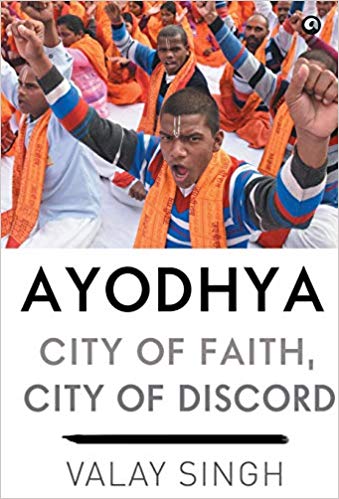Writings that revisit the knocking down of the Babri Masjid in Ayodhya and underscore India’s struggle to remain a secular republic are grim reminders of just how easily and repeatedly political divisiveness triumphs over constitutional values. That, to stamp out the injurious wrath of hateful agendas–-a disposition that has since seemed to have enveloped our collective psyche––it is critical to, with equal rigour, disfavour all beliefs that appeal to individuals and communities to frustrate diversity, and thwart the law that is in its service. Ayodhya: City of Faith, City of Discord, independent journalist Valay Singh’s first book, is a case in point. The second is a special volume from the Indian Journal of Secularism, Babri Masjid, 25 Years On. Both these publications depend on time, or temporal distance, as their central axis of analysis: a ‘look back’, ‘history’, ‘transformation’, ‘since’, ‘centuries’, ‘millennia’, ‘decades’, ‘years’ and so on; both reiterate that as long as religion provides tenability to political agendas, religion will be an ally in the game of power. But the two books are not simply additions to the assessment of communal violence in India, as much as they are attempts to forestall this kind of collective self-destruction. If forgetting the horrors of violence makes it prone to relapse, then perhaps keeping the memories alive might be a possible path to deterrence.
In Ayodhya: City of Faith, City of Discord, the author makes Ayodhya stand as ‘ground zero in the battle between secularism and religious fundamentalism in India’. By applying a linear, chronological narrative structure, Singh tries to offer a ‘comprehensive biography’ of a city, which over a period of 3,300 years covered in about three hundred odd pages, goes from being ‘insignificant’ and ‘sleepy’ to a place marked by ‘violence and bloodshed’. After taking the reader through several versions of the Ramayana, beginning with Valmiki’s—which lays the foundations to understand the ‘utopian allure of Ram’s Ayodhya’—Singh, tracing the development of ‘aggressive Hindu cultural and religious consciousness’, moves on to examine Ayodhya’s encounter with the British, and the rebellion of 1857. Taking this further, he shows that while India’s Independence in 1947 does not in itself mark a particularly decisive turning point for Ayodhya’s history, developments of local electoral politics do, particularly with the appearance of the Ram Lalla inside the Masjid on the night of 22-23 December 1949. As is well known, it is this occurrence that sets in motion irreversible processes and events that incrementally made governance in India not only tailored to communal preferences, but even the most earnest responses from administrators, jurists and politicians began to produce violent consequences.
Singh describes his book as that which is not ‘only about the dispute’ over the Babri Masjid, and its aim is not to take any particular position over the ‘selective agendas’ that surround it. It is rather, as he says, born of a ‘quest for knowledge’, which ‘hopes to give readers an unfiltered and continuous stream of historical developments that were either centered in Ayodhya or affected Ayodhya substantively.’ What remains unsettled, though, is the central argument that the author wishes to make by taking this approach: whether we are meant to read it simply as a series of facts that have been gathered about a city and a specific architectural sitemuch of which is drawn from secondary sources, or surmise that in the present context the very act of bringing together ‘many histories and stories’ related to Ayodhya might ostensibly be read as an extension of the writer’s political stance. Singh claims, ‘In India today, secularism and socialism have become contemptible ideas that many liberals have stopped defending.’ Even if it might be difficult to read the statement as blanket endorsement of any kind of state of affairs, one implication of it might be that, following the violence of December 1992, any critical focus on the history of Ayodhya and of the Babri Masjid, on its own terms, has definitely been crippled; all attempts are inevitably enclosed within the defensive logic of addressing the communal and Hindu nationalist paraphernalia, which then conspires to weaken the book’s basic premise and promise.

